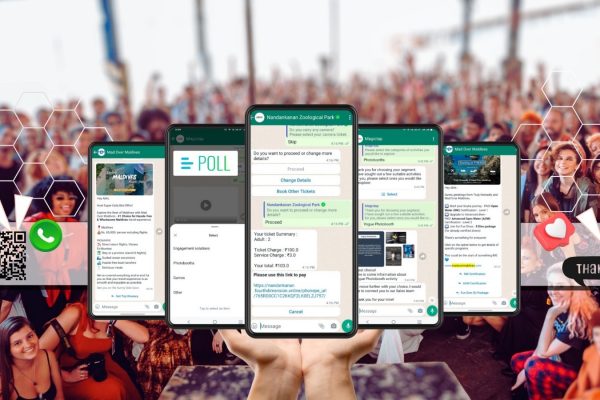
QR- We have heard of it, spoken about it, used it and shared it as well. We are well versed with it. It’s been among us for a long stretch of time. Even if one were to be highly critical in its review, one would still agree that it has almost always come through with minimal hassle. It works!
Further, it more often than not, eases something in our daily life. We feel a sense of ease every time we come across the misshapen but strangely symmetric grid of black and white ( well, mostly). Thus, it would be safe to assume that we trust the technology.
The trust is not misplaced as well. QR based solutions range across the gamut of industries and find their uses almost everywhere. This integration across multiple fronts has also contributed to the users- getting increasingly familiar with the technology. ““`
Or so it feels. Many of us know the standardised process of using a QR to be called an expert ‘User’ of the tech. But an inordinate number among us would still love to understand the robust yet mostly unknown process that quite literally opens doors for us.
How did QR codes originate?
The origin of QR codes traces back to Japan in the mid-1990s. QR, or Quick Response, codes were developed by Denso Wave, a subsidiary of Toyota, in 1994. The primary purpose behind their creation was to improve the efficiency of tracking automotive parts during manufacturing.
It is worth mentioning that Denso Wave made their QR code publicly available and declared they didn’t exercise their patent rights as well. This meant anyone could make and use QR codes. Kudos to them!

How do QR codes work?
The patterns within QR codes represent binary codes that can be interpreted to reveal the code’s data. It is better than a barcode as it can store alphanumeric, kanji.
A QR reader can identify a standard QR code based on the three large squares outside the QR code. Once it has identified these three shapes, it knows that everything contained inside the square is a QR code.
The QR reader then analyzes the QR code by breaking the whole thing down into a grid. It looks at the individual grid squares and assigns each one a value based on whether it is black or white. It then groups grid squares to create larger patterns that encode a string of data. When scanned, the pattern of the qcode can be translated into human-readable information
Why do QR codes enjoy widespread popularity?

QR codes garner popularity for various compelling reasons. Let’s delve into some of them:
1. Maximise Efficiency :
The conventional manual data entry process often leads to errors and time delays. However, with QR codes, a swift and straightforward scan suffices to bring a plethora of information directly to your devices. The seamless connection between the physical and digital realms facilitated by QR codes not only streamlines user experience but also augments data collection and enhances workflow efficiency for businesses.
2.Enduring Utility:
Beyond their role in marketing and advertising, QR codes find application in diverse sectors such as product authentication, logistics, contactless payments, ticketing systems, and educational environments. This versatility renders them invaluable tools across a spectrum of industries.
3.Cost Reduction:
QR codes serve as potent cost optimisation tools for businesses. By obviating the need for paper-based marketing materials, QR codes contribute to enhanced inventory management, streamlined operations, efficient data collection, content editing facilitation, and simultaneously enriching the customer experience – all encapsulated within a single QR code.
4.User-Friendly Interface:
Prioritising user experience, QR codes offer an intuitive and easily navigable means of accessing information. Each QR code typically leads to a specific predefined action, be it opening a website or launching an app. Their clarity of purpose minimizes user confusion, ensuring immediate comprehension of their functionality.
5.Unmatched Versatility:
One of the most remarkable attributes of QR codes lies in their unparalleled versatility. They possess the capacity to encapsulate a wide array of data types while maintaining compactness and accessibility. Their inherent functionality, coupled with seamless integration into existing technologies, renders them indispensable tools for businesses across all scales.
Owing to these, the adoption of QR and of QR based systems has been rising exponentially. USA leads the number of QR scans with over 2.8 million scans across industries, apps and usage in 2024 with India emerging as the nation with the second most QR scans contributing to almost 10% of global scans.
Events do and will continue to play a significant role in increasing the adoption owing to the ease it brings into the entire ticketing, access, payments and tracking process. With the proper ticketing, payments partner, almost every aspect of any event can be simplified and hastened without compromising on quality. The right integration opens doors everywhere.







